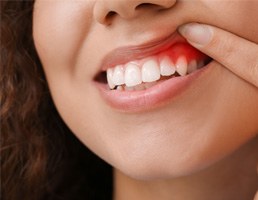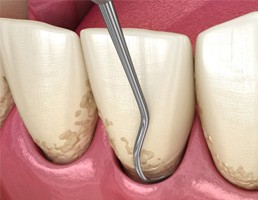Periodontal Treatment – Aspen Hill, MD
Giving Your Teeth a Healthy Foundation

Your teeth are obviously very important to your oral health, but your gums matter a great deal too! When too much plaque and bacteria is able to collect on them, it can lead to an infection known as gum disease. This is characterized by redness, swelling, and bleeding, and these are just the early symptoms. Without professional care, your teeth can even fall out. If your gums feel more sensitive than usual, call the Dental Center of Aspen Hill today! We can provide you with localized options for gum disease treatment in Aspen Hill, MD that is necessary to restore and protect your smile!
Why Choose Dental Center of Aspen Hill for Gum Disease Treatment?
- Routine Gum Screenings During All Checkups
- Detailed Specialty Cleanings to Remove Infection
- Advanced and Comfortable Technology with Laser Gum Care
What is Gum Disease?
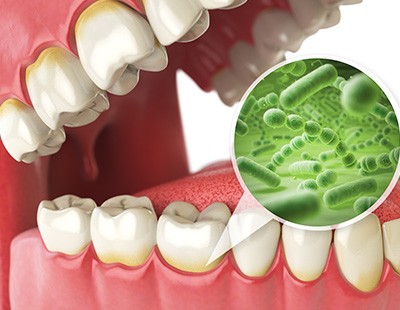
Also known as periodontal disease, this inflammatory infection is caused by harmful bacteria found in plaque and calculus, particularly around the gumline. These bacteria irritate and infect the gum tissue, eventually spreading to the jawbone and putting your entire smile at risk. In fact, studies have found that untreated gum disease can affect the entire body! It can increase your risk of cardiovascular disease, dementia and Alzheimer's, and even certain kinds of cancer. In other words, it is important to treat gum disease as soon as possible to preserve not just your teeth and gums but also your overall health and well-being.
Symptoms of Gum Disease
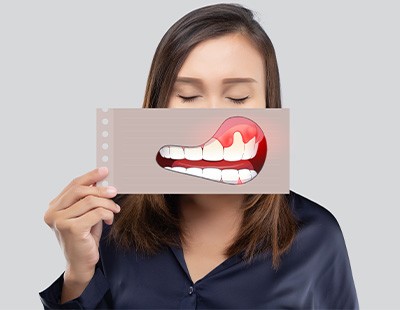
Early on, infected gums appear red and puffy and tend to bleed easily when you brush or floss. As the disease progresses, however, the gums pull away from teeth or recede, creating pockets under the gum surface where plaque can hide and accumulate deeper. Because of the bacteria, you might also find that you have persistent bad breath or a bad taste in your mouth. Eventually, teeth can feel loose and even come out completely.
How Do We Treat Gum Disease?
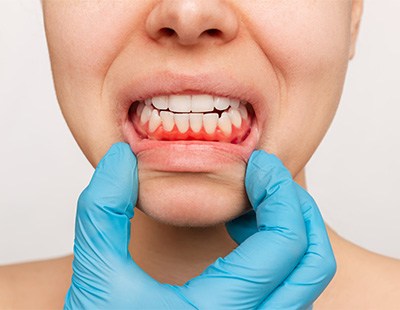
The sooner we can address periodontal disease, the better! In the early stage, this infection may be reversed through a simple, routine cleaning and more diligent at-home brushing and flossing. More advanced gum disease may require scaling and root planing, antibiotic treatment, or laser treatment, depending on the severity. After we’ve assessed your condition, we can break down a detailed plan for getting this infection under control.
Scaling & Root Planing

At our office, the standard gum disease treatment is scaling and root planing. This two-part procedure is a dental “deep cleaning” that removes plaque from your teeth and gums. During scaling, we use an ultrasonic cleaner to remove plaque and deposits beneath your gumline. The later “root planing” smoothes out your tooth roots so your gums can healthily reattach. If you’d like more details on these steps, please keep reading or call us soon.
Antibiotic Treatment

In between your teeth, there are very tiny spaces known as periodontal pockets. These are the main spots where gum disease bacteria typically gather and develop. Since they are quite difficult to clean with regular dental instruments, we opt for antibiotic therapy instead. You will take the antibiotics orally just like you would any other medication. After a bit of time taking the medication, you’ll come back to our office so we can see if and how it is working.
Soft Tissue Laser Dentistry

To make your treatment even more comfortable, we use a soft tissue laser to remove any harmful bacteria from along the gum line. Through a concentrated beam of light, the soft tissue laser vaporizes all bacteria, leaving healthy gum tissue completely untouched. Since this advanced instrument emits no heat, sound or vibrations, you likely won’t even need local anesthetic to complete your treatment!
Gum Disease Treatment FAQs
How Common Is Gum Disease?
Unfortunately, gum disease is extremely common. In fact, about half of American adults over the age of 30 has an advanced form of this inflammatory infection, and just over 70 percent of adults above age 65 are affected. However, just because gum disease is widely experienced, it doesn’t mean you shouldn’t take it seriously. It’s the leading cause of tooth loss worldwide, it has been linked to many life-threatening systemic conditions, and results of several studies suggest that tooth loss may contribute to shortening a person’s life expectancy.
How Long Does Gum Disease Treatment Take?
The duration and frequency of your treatment will depend on how severe the infection has become and how well you are responding to it. Typically, more advanced gum disease requires multiple treatments, which occur about every three to four months until it is under better control. Keep in mind that we may need to repeat scaling and root planing or the other therapies multiple times before we’re confident in your oral health again. Even after signs of gum disease have subsided, we may ask you to continue coming in for special maintenance cleanings at this same frequency to make sure the infection doesn’t resurface and damage your smile further.
Does Gum Disease Ever Go Away?
Gum disease will never get better on its own. Without professional treatment, it will continue to progress and wreak havoc on your smile and the rest of your body. Even after tooth loss, gum disease can keep afflicting you and still requires treatment. Along the same vein, once you have experienced gum disease, the infection can return more easily and quickly, which is why we may strongly recommend three or four cleanings in a year, rather than just the usual two.
How Much Does Gum Disease Treatment Cost?
Because of the varying nature of treatment necessary for each patient, estimating the general cost is not possible. Your cost upfront may be higher as we concentrate on getting the gum disease controlled as quickly as possible. As we make progress, your costs should decrease as the frequency and intensity of your therapy decreases. Suffice to say that additional cleanings every year for maintenance will also cost more than your usual rate for regular cleanings alone. The good news is that if you don’t have dental insurance benefits, you can take advantage of our in-house membership plan, which gives you some of these extra essential benefits at just $80 per month.



